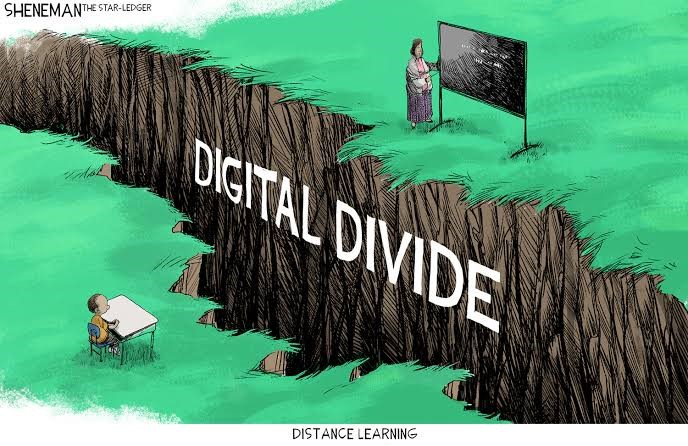CURRENT AFFAIRS
Get the most updated and recent current affair content on Padhaikaro.com
Consequences of growing digital divide
- IAS NEXT, Lucknow
- 12, Oct 2021

The Supreme Court has flagged the consequences of growing digital divide.
- It observed, the digital divide caused by online classes will defeat the fundamental right of every child to education.
How have online classes impacted children?
- Little children whose parents are too poor to afford laptops, tablets or an “optimum” Internet package at home for online classes during the pandemic have dropped out of school and even run the danger of being drawn into child labour or worse, child trafficking.
- Even, the right to education has now hinged on who could afford “gadgets” for online classes and who could not.
What’s the issue?
The court was hearing a petition filed by private school managements challenging a Delhi High Court order of September 2020, directing them to provide their 25% quota EWS/DG students online facilities free of cost.
- The High Court had said the schools could get reimbursement from the government.
- The Delhi government had said it had no resources to reimburse the schools for the online gadgets.
Though the Supreme Court had stayed the High Court order in February 2021, the court said both the Centre and States such as Delhi could not bow out of their responsibilities towards children.
What next?
The Court asked the Delhi government to come out with a plan to effectuate the ‘salutary object’ upheld in the High Court decision. The court said the Centre should join in the consultation.
What is Digital Divide?
It means discrepancy between people who have access to and the resources to use new information and communication tools, such as the Internet, and people who do not have the resources and access to the technology.
- It also means discrepancy between those who have the skills, knowledge and abilities to use the technologies and those who do not.
Where does it exist?
The digital divide can exist between those living in rural areas and those living in urban areas, between genders, between the educated and uneducated, between economic classes, and on a global scale between more and less industrially developed nations.
Status in India:
- Although India has 220 million smartphone users and is the second largest smartphone market in the world, the overall penetration is still just about 30 per cent of the population.
- There is a huge rural - urban and inter state digital divide in India.
- According to statistics, more than 75 per cent of the broadband connections in the country are in the top 30 cities.
- Similarly, many states like north-eastern states, Uttar Pradesh, Bihar, Jharkhand, Orissa, Chhattisgarh and Assam lag behind other states in the use and development of ICTs.
- Globally 12 percent more men used the internet than women in 2017, while in India only 29% of total internet users are females.
- Another important reason of digital divide in India is knowledge divide. Knowledge divide is directly related with digital divide.
Impact of Digital Divide:
- Low female representation: Due to huge digital divide in gender, thousands of Indian girls in these far-flung areas are refused access to Information and Communications Technology (ICTs), which is a primary cause of low female representation in jobs.
- Denial to information/knowledge: This lack of equal opportunities to access online services and information deprive people of higher/quality education and skill training that could help them contribute to the economy and become leaders on a global level.
- Non delivery of welfare schemes: As many schemes have started using ICT in their delivery, at the same time due to digital divide it will create more problem.